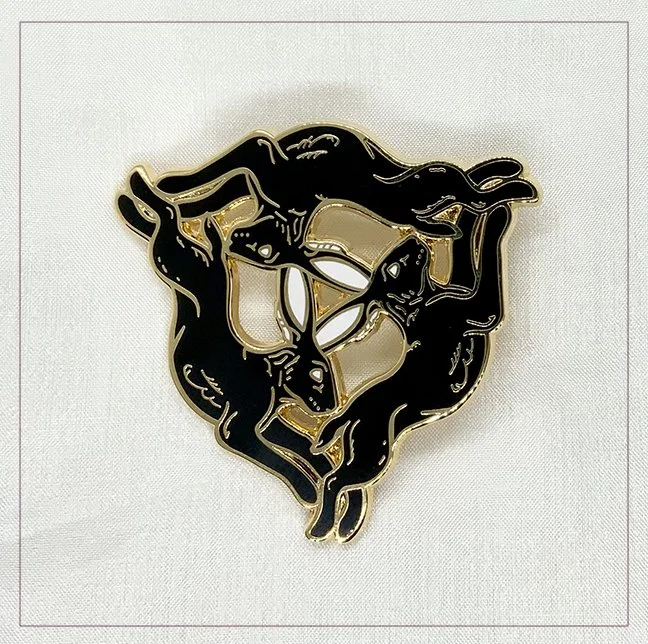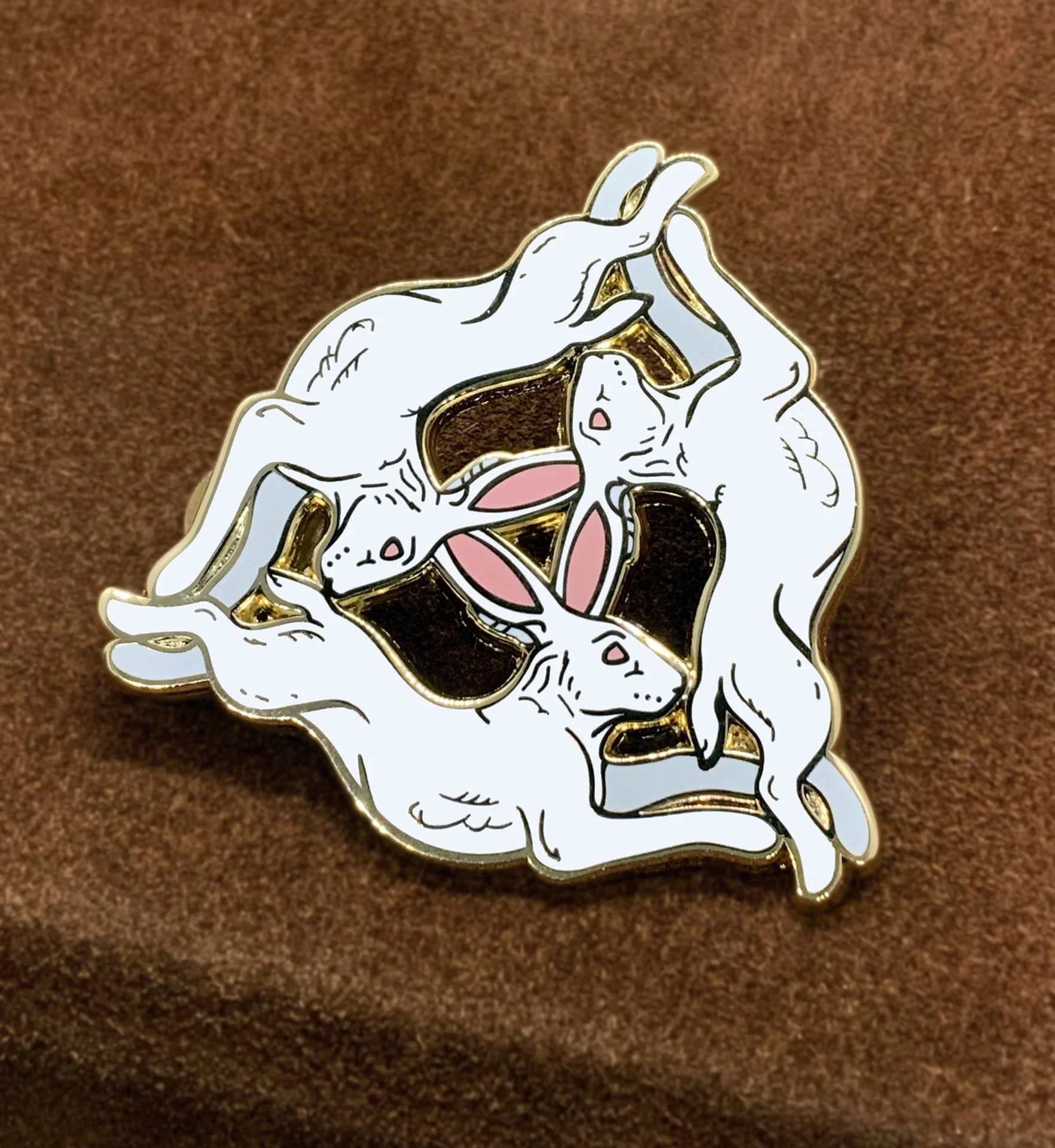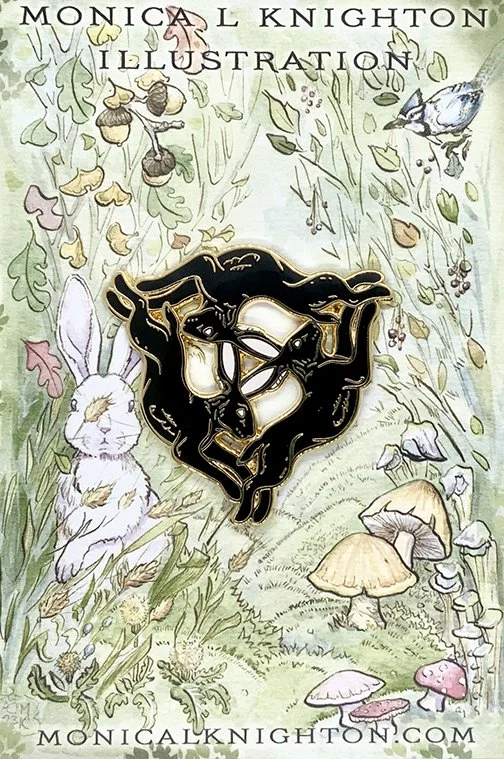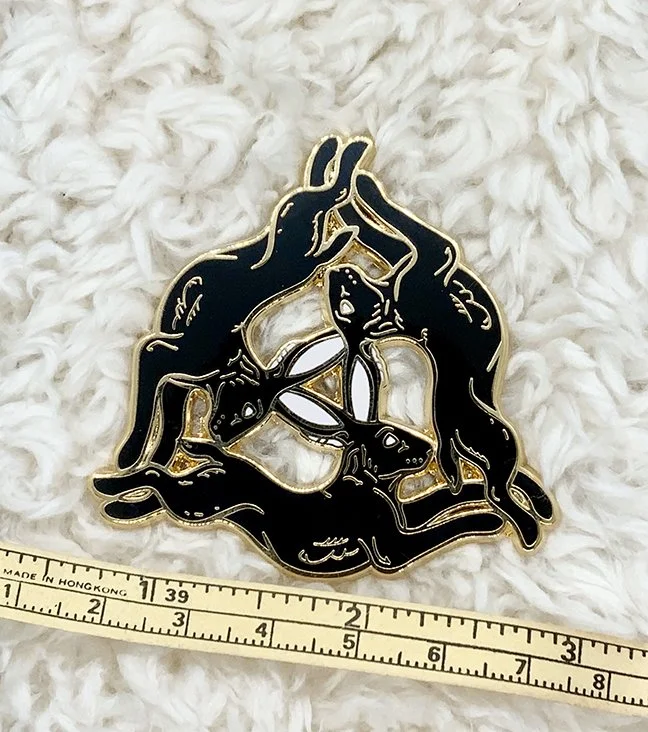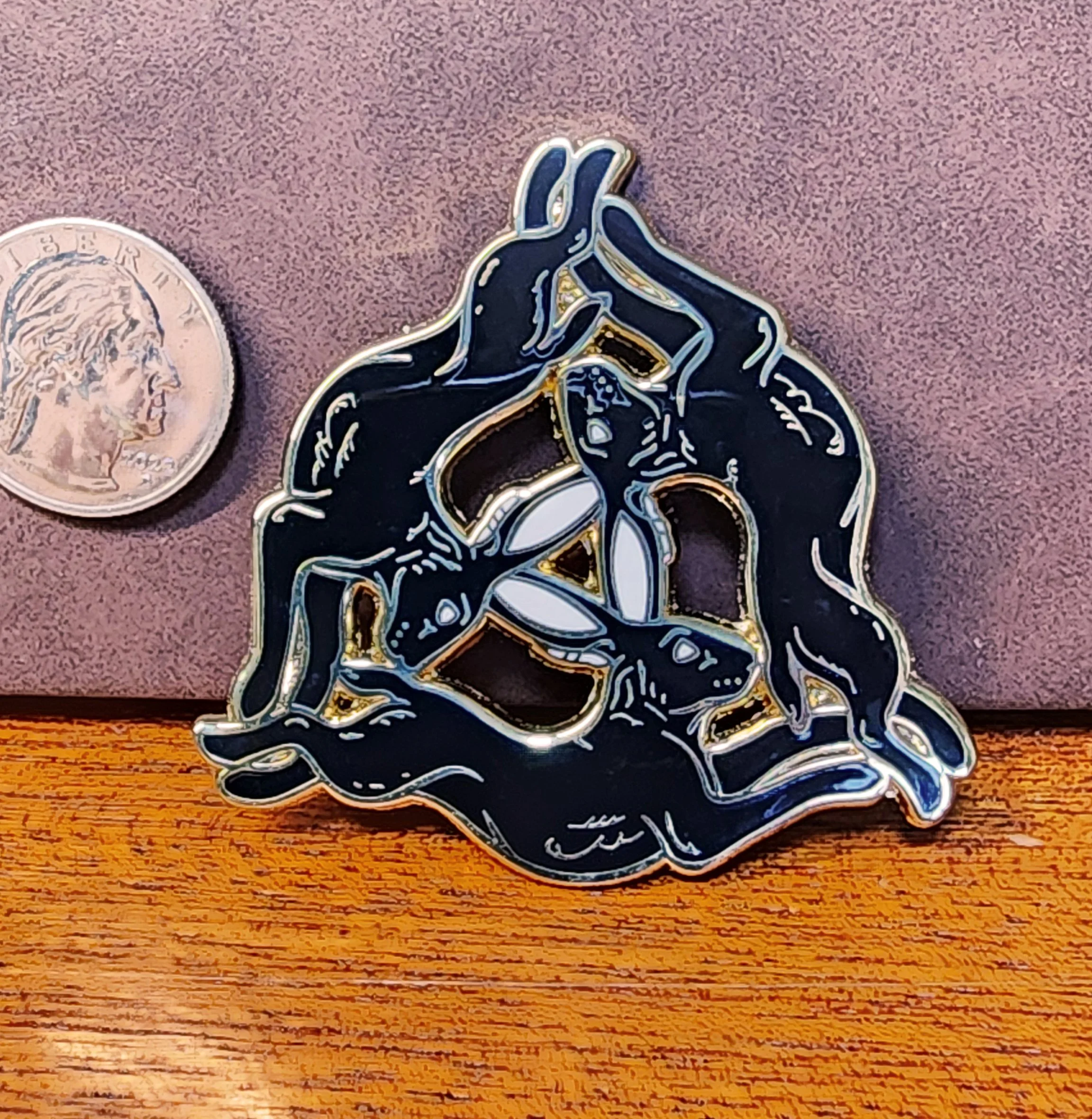Dreihasenfenster, Tinner's Rabbits hard enamel pin, triskel
Dreihasenfenster, Tinner's Rabbits hard enamel pin, triskel
THE DREIHASENFENSTER OR ‘WINDOW OF THREE HARES’ - hard enamel pin from my rabbits in folk lore series!
Gold plate
Available in Black or White
~2 inches in length
Double clutches
Artist Backstamp
Arrives on 4 by 6 illustrated presentation card
The first time I saw the Hare Window or Hasenfenster three hare motif was in a book of Brian Froud artwork a friend was reading. Being familiar with triskeles and the Isle of Mann's three legs emblem, I chalked it up to being a pagan sun symbol from that region – but that’s not the case!
The design is much older and much more far reaching, and its exact origins and meaning is up for debate. And honestly, not to commit “hey why don’t I Google that for you” but Wikipedia’s intro is so solid I’d feel dumb trying to rewrite it, so here:
“The three hares (or three rabbits) is a circular motif appearing in sacred sites from East Asia, the Middle East and the churches of Devon, England (as the "Tinners' Rabbits"),[1] and historical synagogues in Europe.[2][better source needed] It is used as an architectural ornament, a religious symbol, and in other modern works of art[3][4] or a logo for adornment (including tattoos),[5] jewelry, and a coat of arms on an escutcheon.[6][7] It is viewed as a puzzle, a topology problem or a visual challenge, and has been rendered as sculpture, drawing, and painting.
The symbol features three hares or rabbits chasing each other in a circle. Like the triskelion,[8] the triquetra, and their antecedents (e.g., the triple spiral), the symbol of the three hares has a threefold rotational symmetry. Each of the ears is shared by two hares, so that only three ears are shown. Although its meaning is apparently not explained in contemporary written sources from any of the medieval cultures where it is found, it is thought to have a range of symbolic or mystical associations with fertility and the lunar cycle. When used in Christian churches, it is presumed to be a symbol of the Trinity. Its origins and original significance are uncertain, as are the reasons why it appears in such diverse locations.[1]”
The design I drew the most inspiration and reference from is the Dreihasenfenster or Window of Three Hares in the Paderborn Cathedral in Germany.

